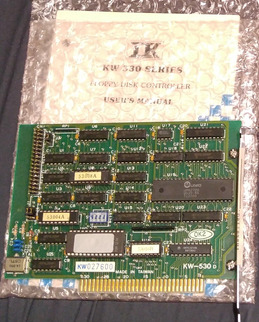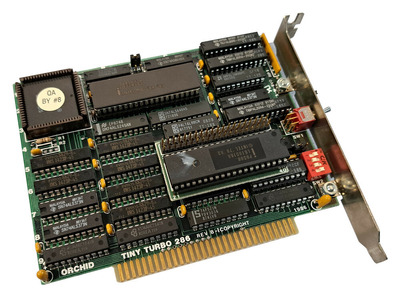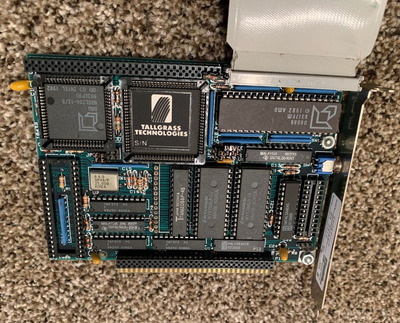jakethompson1 wrote on 2023-11-05, 22:20:
Any particular reason why such an "8086 AT" wasn't a more common thing?
Was it simply not worth the trouble to go to all of the trouble to provide an AT board and peripherals and then cheap out on the CPU, by the time it made sense for clone vendors to create a 16-bit bus budget system?
Sorry, I don't know. To me, it would be irrational to not to address these things from a purely rational point of view.
However, I'm looking at the situation from a 1990s point of view, also.
The IBM PC was designed before my time, so I can't really follow the design decisions made back then.
I guess back then it made sense to build the IBM PC as an 8-Bit PC (8-Bit by a hardware designer's point of view).
Probably because chips couldn't run at high frequencies (8 Mhz) or because the already slow DRAM chips needed additional waitstates, anyway.
The use of Z80 era support chips like the 8257, 8259, 8253, 8250 (SIO was better IMHO) was tempting, too.
Many home computers and S100 computers used them, they were readily available.
By going that route, it was possible to quickly establish a platform/a product family.
Later on, it could be replaced by the "real deal", an all 16-Bit system (16-Bit software, 16-Bit hardware).
So by setting the bar low at first, it was easy for IBM to improve with little effort, too.
Unfortunately, the 80186/80286 were somewhat of an improvement that the 8086 wasn't enough to be bothered with anymore, maybe.
Other third-party manufacturers shared a similar point of view, apparently.
To my knowledge, there are neither CPU accelerator cards for 8086 PCs, nor 8086-based CPU accelerator cards for 8088 PCs.
Rather, there are a dozen of 80286 and 80386 CPU accelerator cards for 8088 PCs.
So XT users must have been somewhat thirsty for improved performance.
Otherwise, there wouldn't have been so many cards of that kind being made.
-
The only exception I can think of were PC emulator boards for Atari ST and Amiga, maybe.
They not seldomly did contain a NEC V20/V30 or higher CPU on a daughtercard, to be interfaced with Motorola 68000 (a 16/32Bit hybrid).
-
Edit: There kind of were "80186 AT" like PCs, at least. Or rather, Enhanced XTs.
The BBC Master 512 and the Tandy 2000 come to mind.
And the Siemens PC-D PCs from the mid-80s.
They used the 80186 as a quicker alternative to the 8086 processor.
However, the 80186 was more of a microcontroller
(or SOC, System-On-a-Chip by nowadays terminology) which integrated some standard peripherals.
Unfortunately, these internal circuits weren't very IBM PC compatible. 🙁
So the resulting PCs weren't fully compatible, unless the designers ignored these internal "goodies" and attached the 80186 to the usual support chips, as with an 8086.
-
Anyway, there were quite a few DOS capable 16-Bit PCs based on an 8086.
There was the West German c't 86 PC, for example, which comes to mind (not IBM compatible).
As well as some 8086 based PCs made by East Germany (Robotron EC 1834 etc).
Quite a few PCs from ex USSR used 8086 CPUs, too.
https://en.wikipedia.org/wiki/K1810VM86#Applications
jakethompson1 wrote on 2023-11-05, 22:20:
Or more simply, how would it be "IBM compatible" when there wasn't a comparable brand-name IBM system.
Good question. In principle, it's just about removing the bottlenecks by using the full 16-Bit parts where possible.
At its heart, it would still be an PC/XT. The PC BIOS would work like before, the 8-Bit PC bus expansion cards would see same DMA/IRQ controllers as expected.
I mean, of course, on the electric level there would be small differences, yes. Duty cycles, timings of falling/rising edges etc. Those things.
"Time, it seems, doesn't flow. For some it's fast, for some it's slow.
In what to one race is no time at all, another race can rise and fall..." - The Minstrel
//My video channel//


